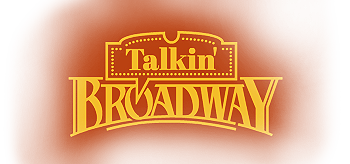|
Regional Reviews: Washington, D.C. I Do! I Do! Also see Susan's review of The Second City's America All Better!!
Unlike other "revisals" of classic musicals that substantially rework the script and lyrics, this production makes only minor changes, done with the approval of book writer and lyricist Tom Jones and composer Harvey Schmidt. The spouses, originally named Michael and Agnes, are now Leslie and Chris and, rather than covering the 50 years from the 1890s to the 1940s, the characters exist in an eternal present. (The more stereotypical scenes of "the man acts this way, the woman acts that way" are performed with traditional casting.) I Do! I Do!, a ground-breaking intimate musical, premiered on Broadway in 1966 with Mary Martin and Robert Preston. As in its source material, the 1951 play The Fourposter, the musical follows a married couple from their wedding day until the day, 50 years later, when they leave their longtime home. Some of the moments don't quite fit in the 21st century—the bride's total naiveté on her wedding night, the husband's isolation during childbirth—but audiences can just go with it. In Marshall's version, the shifts among performers are fluid and unobtrusive. As the show begins, Chris (Mary Beth Luckenbaugh) and Leslie (Esther Covington) prepare to marry each other, but Covington exits after the ceremony and Luckenbaugh comes home with Leslie (Steve Lebens). Later, Luckenbaugh leaves the room and Chris (Chad Fornwalt) enters. In all the configurations, Leslie is the "provider," a novelist, while Chris takes care of the home and the (unseen) children. The women sparkle more than the men. Luckenbaugh gets the showstopping song still called "Flaming Agnes," while Covington gets to show off with her extravagant sympathetic labor pains. Lebens is best when he allows the audience to see the vulnerability underneath the character's sometimes bombastic personality, and Fornwalt conveys in turn both silent defiance and hilarious frustration. The music is melodic and fairly continuous as directed by Tom Fuller and performed by three pianists. Marshall and assistant director Quinn Anderson keep the performers moving in a stylized form of half walking, half dancing, on Patrick Lord's nonspecific set; the actors wear color-coordinated costumes (Leslie in blue, Chris in red) designed by Rip Claassen. American Century Theater
|
